Hidden Cities / GALETO OR THE LAST SECRETS OF LISBON
When the zeitgeist materializes in architecture, or a small revolution in Lisbon. For almost six decades, the iconic GALETO has been creating a space for noisy family gatherings, romantic moments, and introverts alike.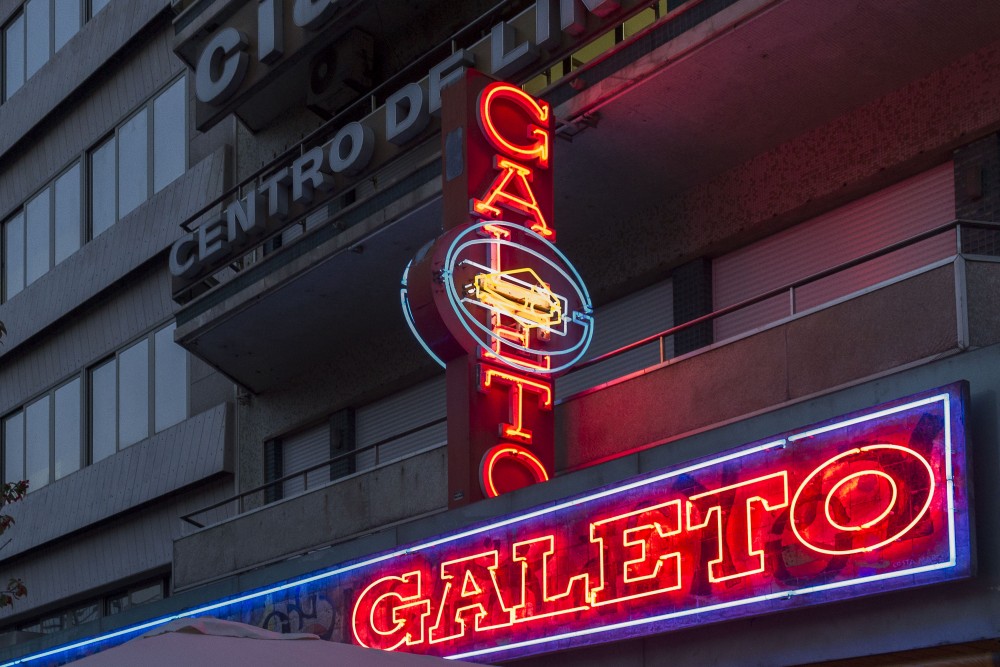
I’ve only celebrated my own birthday alone in a bar once so far, in November 2021. I was in Lisbon at the time and my plans to celebrate my day with friends got cancelled at the last minute. Disappointed, I sat in my apartment that morning and decided to drive to the ocean that afternoon. I walked along the beach and that was all I needed at that moment. On the way home, however, I got in the mood for a solo drink – and also a date with my city. Instead of dinner with loved ones, Plan B became a bar called GALETO. I got off the yellow metro line at the Saldanha stop and walked down Avenida da República to the place. I sat at the long bar in the back and ordered a glass of Portuguese red. I don’t remember if it was from the south, the coast or the north, either way it was delicious. I sat there alone, surrounded by other people – solitaries like me, older and younger couples, families – and hardly any tourists. I glimpsed the surroundings, drank wine and wrote something in my diary. After a while, the place filled up completely. Only I knew it was my birthday – and I quite enjoyed this “secret” celebration.
I had visited Galeto for the first time a few years ago, in the summer of 2015. At that time I was taken there by my friend Nikolai Nekh, a Portuguese artist with whom I was preparing a joint exhibition at the time. I want to show you one place. I think you’ll like it, he told me one day, and a week later we found ourselves in Galeto together. You see those shabby walls? Nikolai said. I stared at the golden relief made up of lots of marbles, which already had a nice honest patina. It used to be where prostitutes used to lean at night until they left with one of the customers hanging out at the bar.
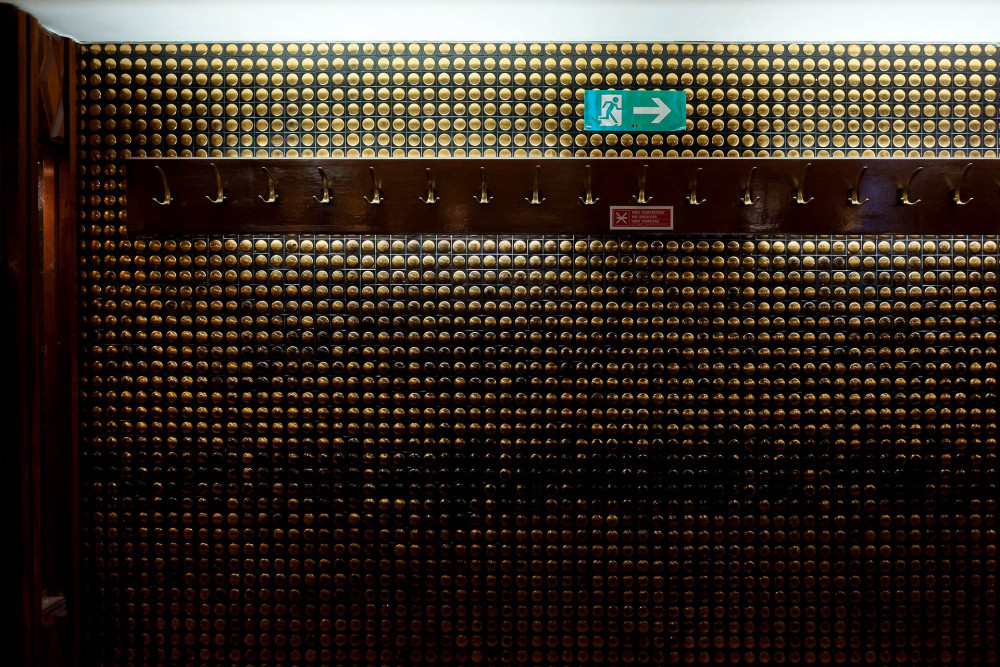
Galeto isn’t just a bar and restaurant – it’s so much more. It consists of several consecutive sections, whose life ebbs or bubbles according to the different phases of the day. The business is located on the ground floor of a residential building, on the facade of which the blue and red GALETO neon sign has been hanging for 57 years. In front of it is an esplanade, a terrace. When you enter, you first find yourself in the pastelaria and gelateria, that is, the bakery and ice cream parlour. At the back of the space is a large restaurant, which also serves as a bar.
If Edward Hopper lived in Lisbon, I’m sure he would go to Galeto to find subjects for his paintings. I can quite well imagine a Lisbon version of the Nighthawks painting. The interior and atmosphere of this place is a bit like an American diner. This is also the reason why I chose this place for my solo celebration. Unlike other Lisbon venues (the Portuguese are mostly very social and love big communal dinners and get-togethers), I didn’t feel out of place with myself for a moment at my birthday “party” here.
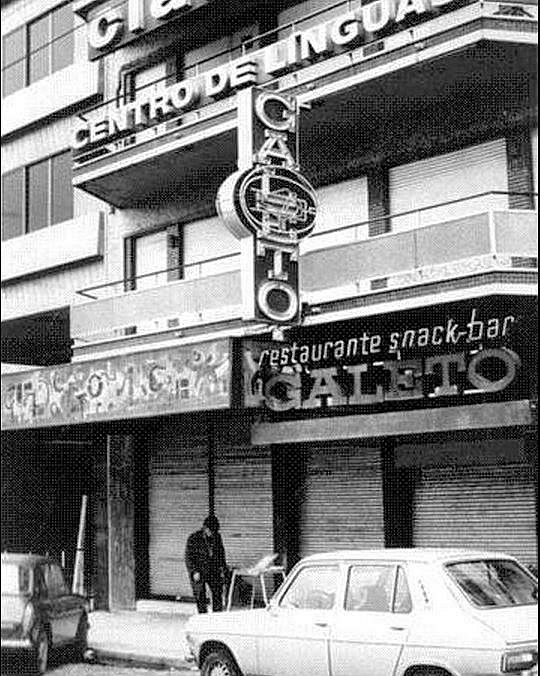
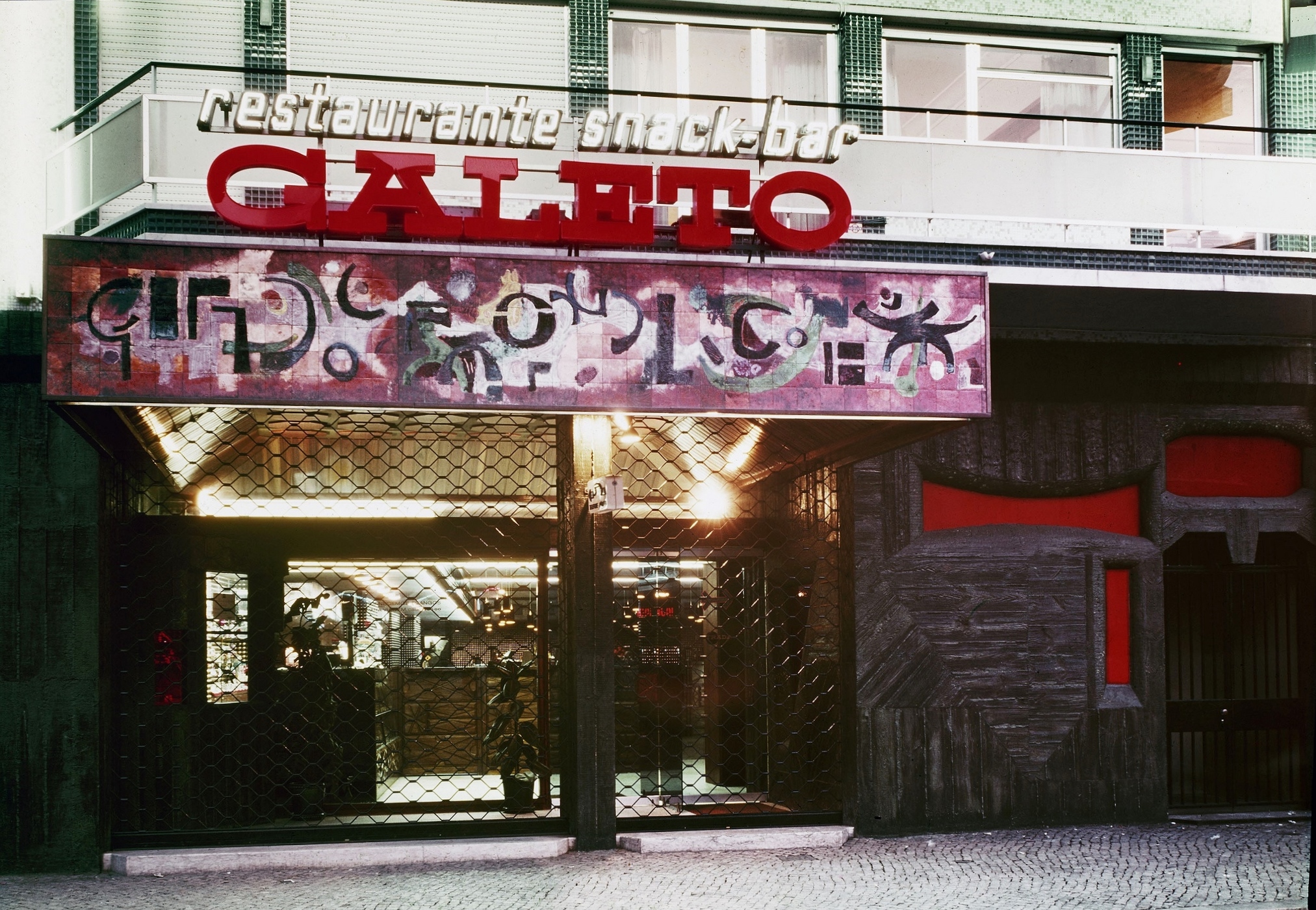
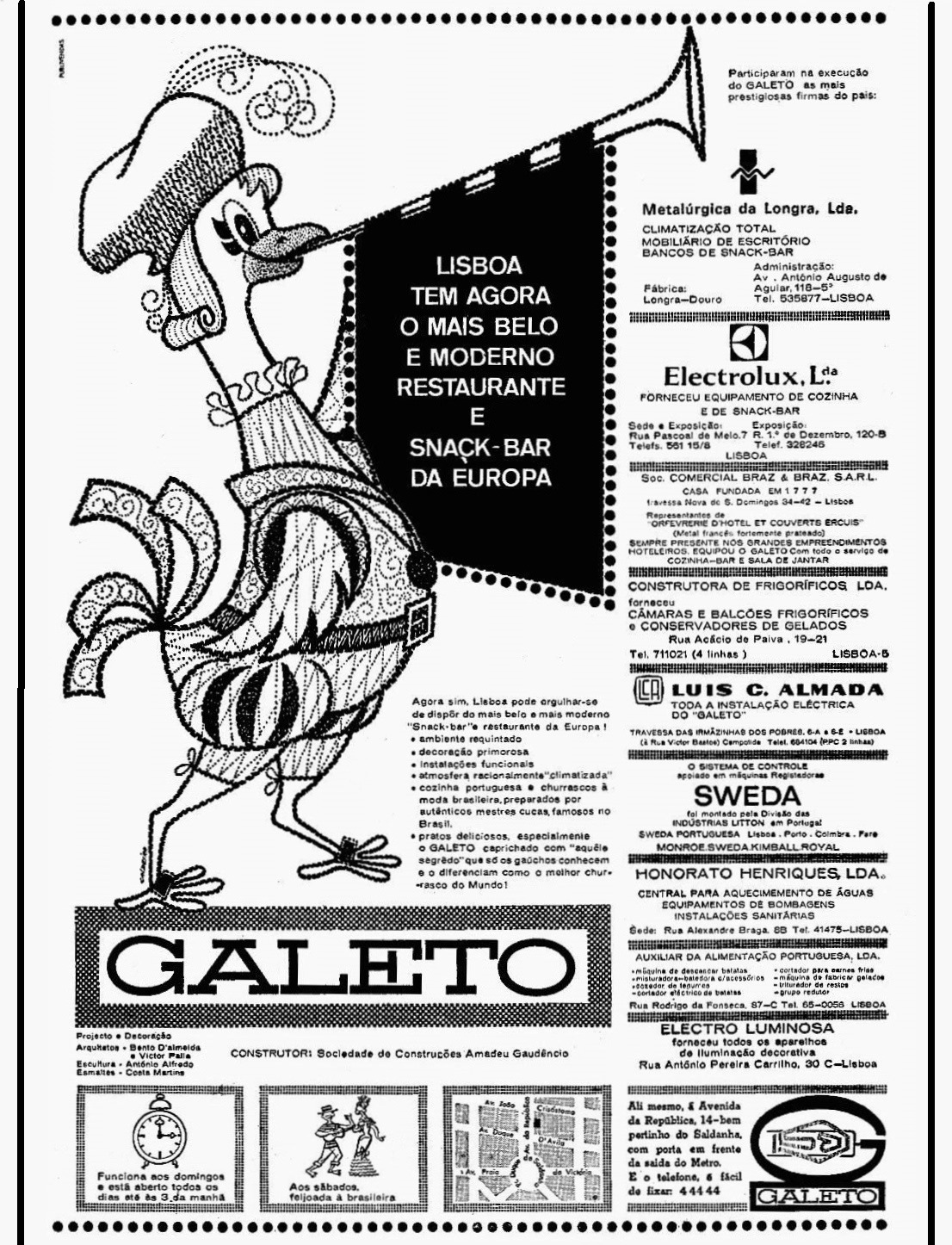
GALETO didn’t appear out of nowhere in the 1960s. At the time of its creation, it fulfilled the needs of the times – it came at a time when society, until then mostly functioning in communities, began to atomize and individualize under the influence of life in the big city and other circumstances. This enterprise, which put Lisbon on the map in 1966, is also linked to the urban development of the city. Saldanha – the neighbourhood in which it is located – represents a different Lisbon to the one you see in the historic centre. If you stay for a long time in the narrow and illogically intertwined streets and then one day take the metro a little higher up, the airy nature of the streets and the unexpected urban generosity is almost overwhelming. It’s as if you can suddenly breathe properly. This part of the city is also called Avenidas Novas, or ‘new roads’, and was built from the late 19th to the first half of the 20th century. The aim was to connect the sprawling city centre with the once more rural parts to the north, which had reached the urban periphery. With the new social setting and vibrant urban life, the need for new places and services naturally arose.

The story of the creation of Galeto has an interesting trajectory: Italy – Brazil – Portugal. The Italian community operating in Brazil popularised Galletto – a small charcoal-grilled chicken – on the local gastronomic scene. A group of six Portuguese expatriates living in Brazil decided to bring the popular concept to their own country. Along the way, the letters “L” and “T” were dropped from the original name, and the new venture, with its simple and good-sounding name GALETO, soon became a hot spot in modern 1970s Lisbon. It didn’t just offer grilled chicken, however, but also (revolutionary on the Portuguese gastro scene at the time) burgers and sandwiches.
Naturally, the fast food segment has undergone great changes over the past decades and in this respect the business can no longer compete with current and constantly changing trends. In the context of the current offer, the food at Galeto is nothing special, and fortunately the popularity of the company is not based solely on the gastronomic experience. I would say that for many visitors (among whom I count myself) it is an afterthought. In fact, the unique atmosphere and architectural design of the place is still at the forefront. If you’ve ever visited Portugal, you’ll be familiar with the character of the typical restaurants that the locals call tasca – tiled walls, simple interiors with tables covered in paper tablecloths and neon lighting. Galeto, in the period of its creation, brought something exceptional not only in gastronomy but also in the interior itself.
Victor Palla and Joaquim Bento d’Almeida, who are associated with the local modernist movement, are behind the architectural concept. The pair designed more than 700 buildings in their 25 years of collaboration (1947–1973). Their portfolio included factories, schools, hotels, apartment blocks, restaurants and shopping centres. And it was Palla and Bento d’Almeida who brought the modern North American restaurant model – the snack bar – to Portugal. In addition to Galeto, they implemented other distinctive ventures of this type, such as the snack bars Noite e Dia and Pique-Nique, or Cunha, the iconic restaurant in Porto.

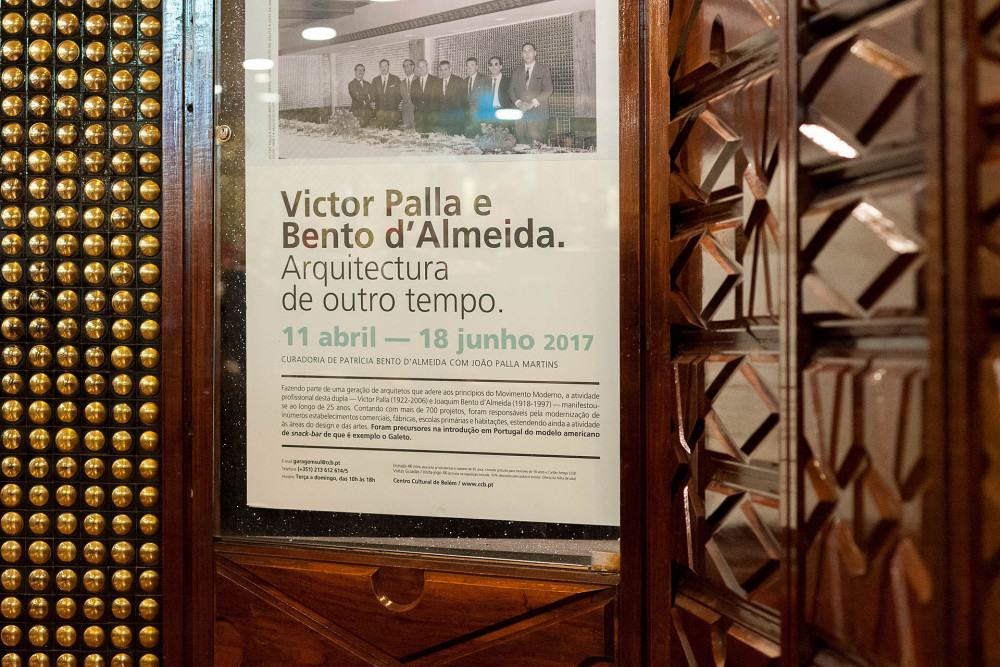
After the opening of the establishment in the 70s and 80s, Galeto became a place where the bohemians met: actors and actresses, people from literature, music or fine arts. It was also popular with those who, after an evening at the cinema or theatre, wanted to go out for dinner or just to have a bite to eat and a drink at a time when other restaurants and bars were already closed. And even though the local bohemian scene has faded from Galeto over time, the diverse and late guests never stopped coming.
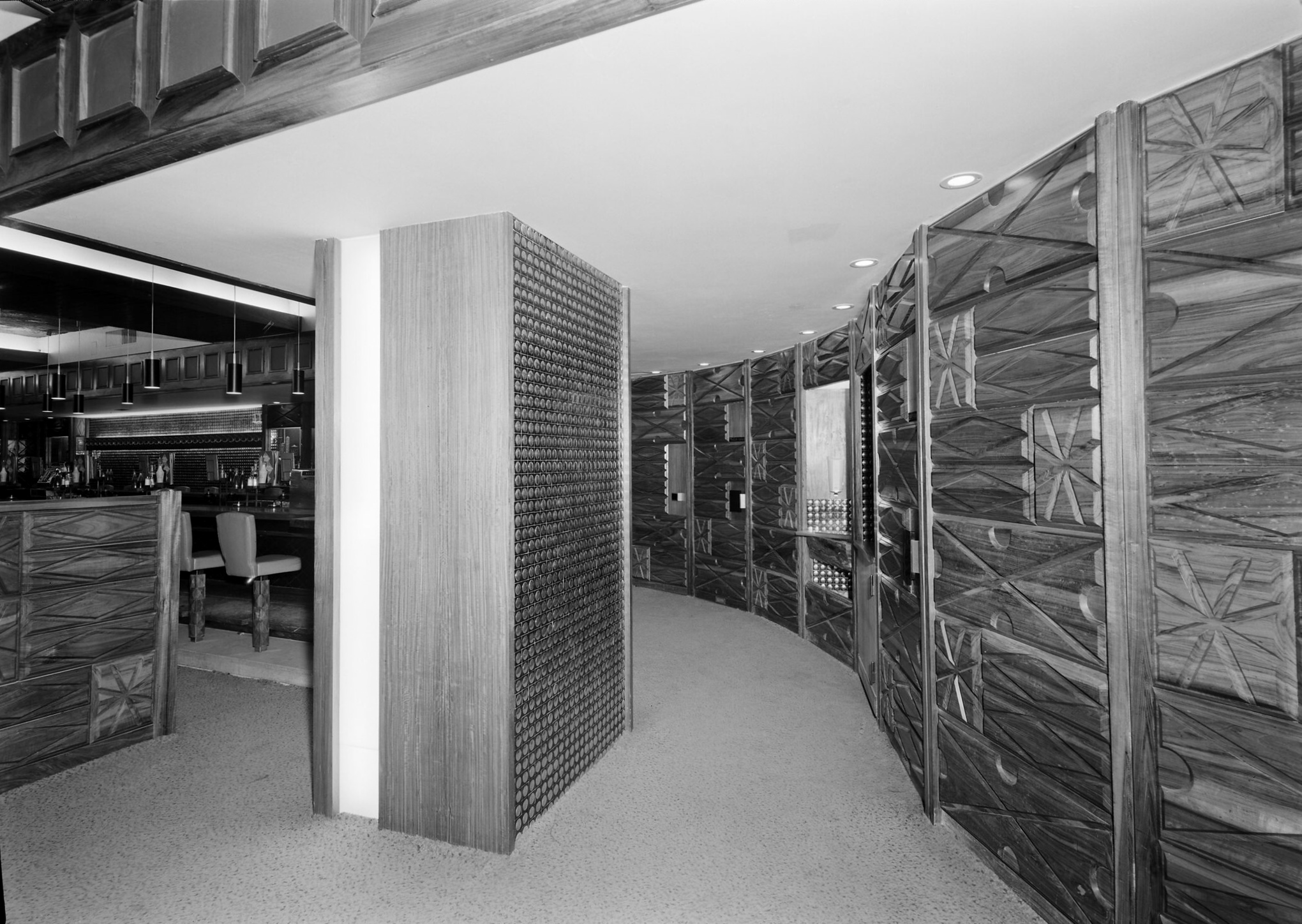
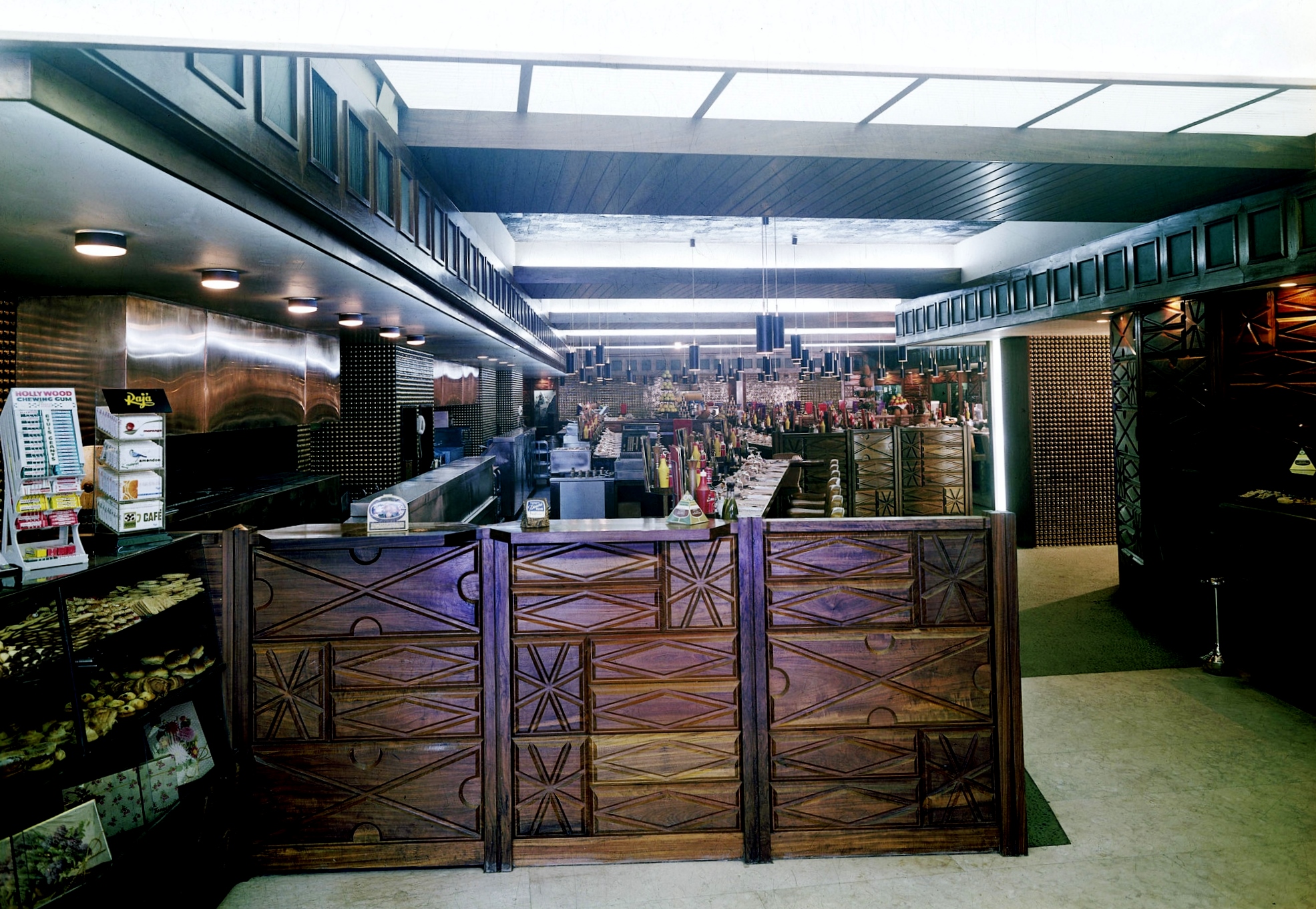
The avant-garde interior of Galeto can accommodate up to 125 people. Despite this generosity, it has an intimate atmosphere, thanks to the low ceiling, the lighting and the materials used. The walls are lined throughout with the aforementioned brass ball relief, which stands out plastically against the dark background. The wall surfaces thus designed alternate with a dark lacquered wood paneling, which is arranged in a geometric relief made up of blocks of different sizes. Stainless steel bowls, laden with fruit, sit at regular intervals on the counter. At the very top is always placed a self-confident pineapple, abacaxi in Portuguese.
All this creates a pleasant but clearly defined and above all timeless backdrop for the central motif of the establishment: the bar, which zigzags like a snake through the entire interior. Its layout encourages interesting social moments: one can sit alone and make eye contact with the people sitting opposite. Together with the dim lighting, this may not, but it can certainly create a suitable atmosphere for a flirtation. As one of the few venues, GALETO is a place that can accommodate different clientele with ease. You’ll often find entire families perched like sparrows on a string on the fixed leather-covered bar stools, shouting over each other. Galeto is also a great place for a date or a late business drink, and also a spot touted for late night or early morning food options. Galeto is the right choice if you’re in the mood for something more festive, but not artificial and relaxed, as is sometimes the case with fancy venues. However, you’ll often see solitaires who come here after work, just to have dinner and read the newspaper. Or women who are here alone to celebrate a birthday.
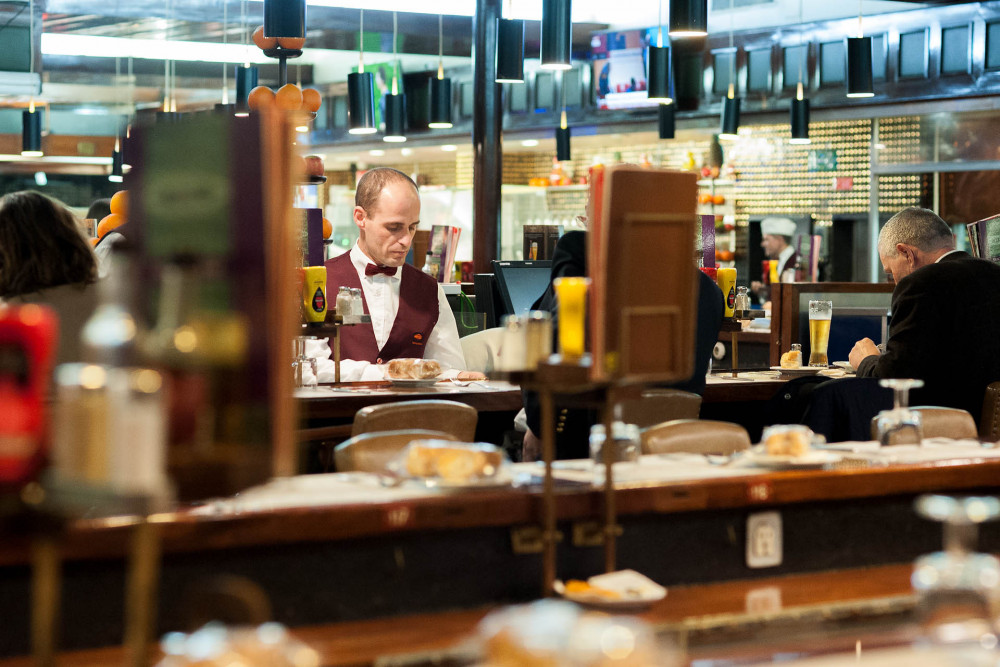

GALETO has one more important aspect – despite the tourism that has engulfed the centre of Lisbon over the last decade and gradually affected other districts, this place remains uncompromisingly distinctive. It should be noted that continuity is an important factor here – the current owner of the business, Francisco Oliveira, is the son of one of the founders. The tradition of inheriting well-established restaurants and cafés from one generation to the next contributes greatly to building their value and authentic atmosphere. Apart from Galeto, it is also strongly present in a number of other, quite ordinary places. Although Portugal has gone through a very harsh authoritarian regime, it is easy to feel that private ownership, family business and the values associated with it have never been interrupted here – unlike in my country.